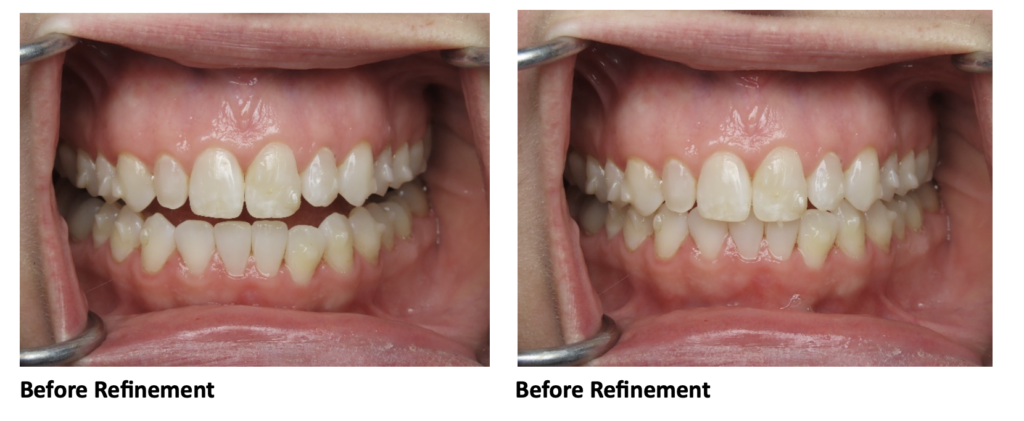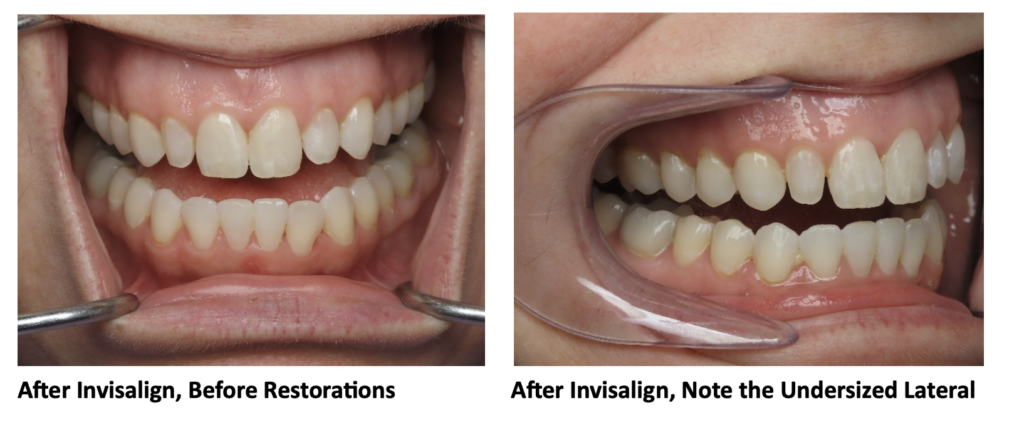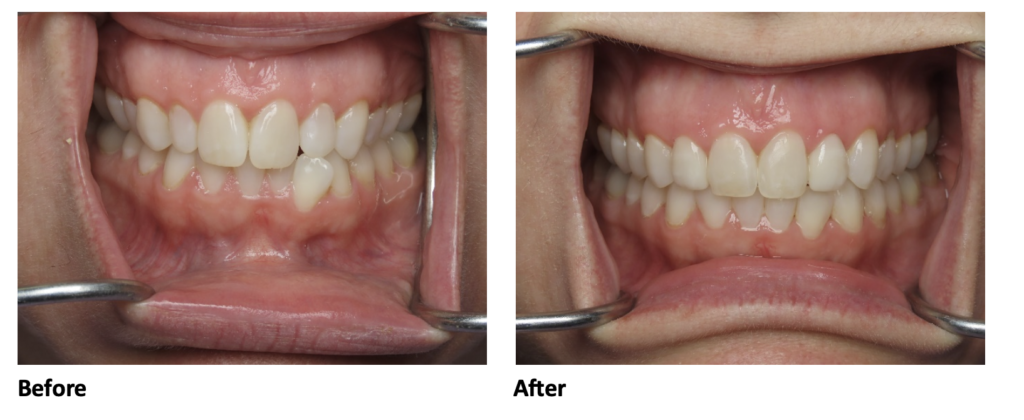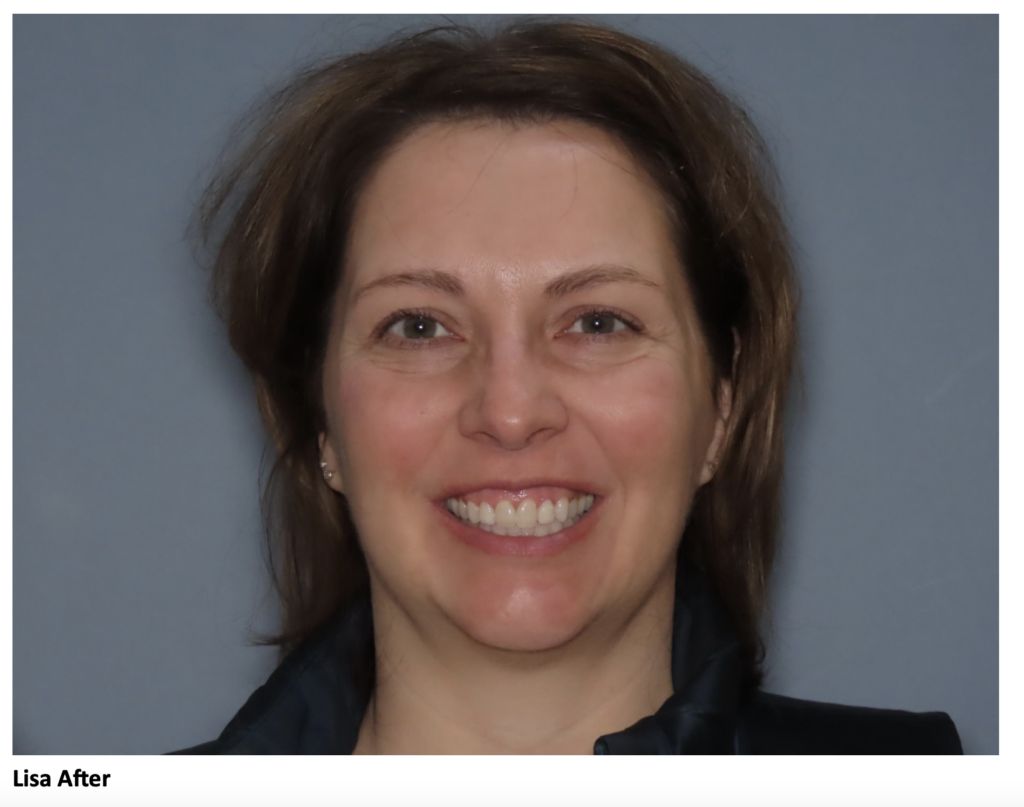By: Dr. Elizabeth Eggert
How did this start?
Dr. Elizabeth Eggert has been working with Lisa since 2016. Initially, Lisa was having issues due to a cracked tooth on her lower right side. After a crown was done for that tooth, it historically and occasionally flares up for Lisa. Dr. Elizabeth noticed that due to Lisa’s crowded teeth, the teeth in her lower jaw sit at an angulation toward her tongue, instead of straight up and down. This puts extra forces on teeth and often will contribute to cracking. Lisa also admitted that she finds herself clenching her teeth together, most of the day and probably at night. This also produces more force than the teeth are prepared to handle. Therefore, the fact that Lisa’s teeth are often sensitive comes as no surprise.
Initially, Lisa thought she would try a standard occlusal guard (or night guard) to help alleviate the pressure she experiences from clenching her teeth. Lisa wore the appliance regularly and she believed it helped, but she still had sensitivity from time to time and when a second tooth started having symptoms of cracked tooth syndrome on her lower right, she knew it was time to take action. She decided she wanted a more permanent solution to her bruxism and that is when the discussion of Invisalign began.

What did Lisa want?
Lisa wanted to straighten her teeth, avoid getting more cracked teeth, and help stop her grinding at night. Lisa didn’t want to have the wires and brackets of traditional braces, so she was excited about the option of Invisalign. When Dr. Elizabeth was planning Lisa’s case, she helped Lisa notice that the small lateral incisors on her upper jaw played a role in why the bottom teeth were crowded. Because of the smaller lateral incisors, the lower teeth had to be more “squished in” and crowded. Dr. Elizabeth talked with Lisa about how after Invisalign treatment, there would be spaces left between her teeth on the upper arch. Luckily, Dr. Elizabeth had a solution, which involved widening those teeth with veneers. Lisa was excited about the prospect of straight teeth and understood why the veneer restorations were necessary so she decided to go forward with treatment.
What was involved?
Lisa underwent the Invisalign records process with Dr. Elizabeth so a treatment simulation could be done. Her treatment was expected to take 10-12 months with the goals of unraveling the crowding, creating space for upper veneers, and providing support for her joints and muscles.
To help with her bruxism, Dr. Elizabeth added bite ramps to Lisa’s Invisalign aligners. These are a way to help keep her muscle more calm because they don’t allow for easy clenching. Despite the bite ramps, Lisa’s strong muscles did continue to clench somewhat, although things were improving for her joints and muscles throughout treatment. Her continuous clenching did slow down her progress and after her initial set of 20 aligners, Lisa’s bite still wasn’t quite perfect. Therefore, Dr. Elizabeth recommended a “refinement” treatment with Invisalign and Lisa’s treatment continued on for another 6 months. During this time, Dr. Elizabeth also gave Lisa exercises to help stretch her jaw muscles so that her clenching wouldn’t continue to impede the progress for her Invisalign treatment.

After 18 months of Invisalign, it was time to plan for Lisa’s veneer restorations. Some simple bite equilibration was also needed for Lisa to finalize her bite position and give her solid stops for her back teeth. Lisa wanted whiter teeth so she decided to try the Opalescence Go! professional white strip whitening system to brighten her smile. Lisa chose to only restore her 2 lateral incisors. Dr. Elizabeth reviewed the pros and cons of completing veneers for her upper 4 front teeth, including better size proportioning, and continued color matching, but Lisa felt that 2 veneers was the right choice for her. So, a laboratory wax-up was done as a blue print for the final restorations and the 2 porcelain veneers were completed for her upper lateral incisors. Lisa was very excited about finishing her treatment after spending the time to move her teeth into a better position!

What does Lisa think of her results?
When we asked Lisa what she thought about undergoing the procedures before she had things done, she said “I kind of knew what Invisalign did – it was going to straighten my teeth and work out problems like cracks in my teeth and help me stop grinding at night.” Lisa didn’t understand that the spacing issues she had were causing her crowding until we started analyzing things.
The process took longer than she was initially expecting, but she understood that her clenching was slowing things down so she worked hard to do her exercises. In the end, she is happy with how everything looks and the outcome. “It looks good!” She really is hoping to slow down any new cracks from forming on her teeth. In talking with anyone considering similar treatment, Lisa would tell them to talk to Dr. Elizabeth because this too may be an option for you and it is definitely a better alternative to brackets!


